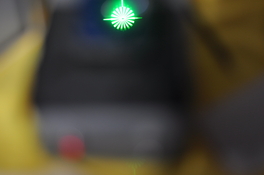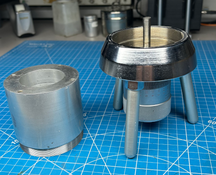In most all SLRs the mirror pivots at the upper portion of the film frame. Mirror angle has very little effect in that area, as the pivot is not moved with the mirror angle adjustment.
In the viewfinder, the top of the film frame is the bottom of the viewfinder image.
So, adjusting the mirror angle affects focus at the top of the viewfinder image.
Assuming the lens has allready been set for infinity focus, if the top of the viewfinder is blurry at infinity, the mirror angle could be off.
A collimator makes a good infinity source.
In this case the top and bottom of the viewfinder image are checked with the green star projected by the collimator.
Each camera has a different means of adjustment.
Yashicas have a screw, accessible from the front, that alters the mirror angle.


In the viewfinder, the top of the film frame is the bottom of the viewfinder image.
So, adjusting the mirror angle affects focus at the top of the viewfinder image.
Assuming the lens has allready been set for infinity focus, if the top of the viewfinder is blurry at infinity, the mirror angle could be off.
A collimator makes a good infinity source.
In this case the top and bottom of the viewfinder image are checked with the green star projected by the collimator.
Each camera has a different means of adjustment.
Yashicas have a screw, accessible from the front, that alters the mirror angle.















